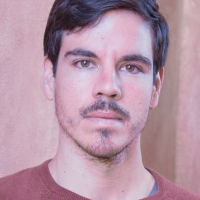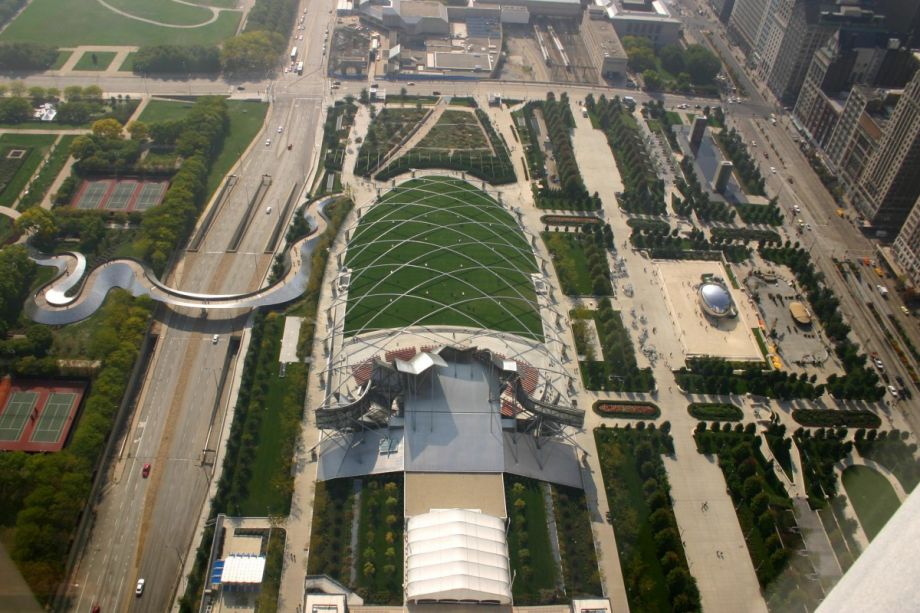Growing up, Cosette Hampton experienced two different Chicagos. Until sixth grade, she lived in the Roseland neighborhood, but when her dad got a new job, the family moved to the wealthier Evergreen Park. They stayed until Hampton’s sophomore year of high school — when foreclosure on their home prompted the family to return to Roseland.
She’s now 22, and pursuing a degree in public policy and urban research at the University of Chicago. When she looks back at the two neighborhoods she called home, Hampton says it’s unlikely she’d be studying what she is now if she hadn’t done the 5-mile move away from Roseland.
In Evergreen Park, a predominantly white neighborhood, where the average household income is a little above $64,000 a year, Hampton joined a volunteer corps that ran community projects. She enrolled in a program led by the Chicago Metropolitan Agency for Planning, Future Leaders in Planning, which teaches high school students how to see Chicago’s neighborhood development issues from an urban planning perspective. Roseland’s average household income is $40,100, and most of its population identifies as a racial minority.
“You can’t be interested in what you don’t know about,” Hampton says.
Throughout Chicago, a city known as much for its diversity as its segregation, there are a growing number of programs aimed at bringing more youth from poverty or minority backgrounds into the civic mindset that Hampton, who is African-American, encountered by the fate of her move. Educators and organizers behind the efforts are betting on the fact that if more minority youth in the region get involved in city planning or architecture — fields that are dominated throughout the U.S. by white men — they can start reversing the dramatic lack of racial equity.
A March 2017 report by the Metropolitan Planning Council and the Urban Institute, “The Cost of Segregation,” highlights the damage done. Researchers set out to verify what decades of government policy pushing racial communities to live separately from each other has done to Chicago’s quality of living. They found that black residents could earn $2,982 more a year, the region’s murder rate could be cut by 30 percent, and 83,000 more citizens would have bachelor’s degrees — if the city “reduced the level of segregation between African-Americans and whites to the national median.”
Meanwhile, 2016 marked the second year of Chicago’s population drain, which is being driven by African-Americans leaving the urban area for warmer climates, safer neighborhoods and better job opportunities.
But it’s also the year that a Chicago arts and educators collective and the Chicago Architecture Foundation started collecting artist proposals for a graphic novel called “No Small Plans” that lays out the city’s planning past, present and future for local students. The book will start showing up in schools like the Chicago High School for the Arts and colleges like Columbia College Chicago this fall.
Then there’s MapsCorps, a community data-collecting program that teaches high school and college-age youth how to perform their own census in the areas they call home. Since starting in Chicago’s South Side in 2009 it’s helped more than 500 high school youth gain technology and job experience, with an emphasis on youth of color.
The Chicago Architecture Foundation’s teen fellowship program is another contender. Along with a youth summer program that the foundation claims brought building design into the lives of 35,000 Chicago public school students in 2016.
Yet even with these programs, Michael Harris, president of the Society of Black Urban Planners, a student group at the University of Illinois at Chicago, says Hampton’s story sounded familiar. “That [story] has happened so many times,” he says. He wants SBUP to bring more mentors into the communities where careers like “urban planner” may not sound familiar.
“You can’t effect change if things are always happening on campus,” he says. “I think it’s more about individuals — and professionals especially — taking ownership of the communities either where they reside or where they don’t reside.” His conversations with Chicago youth have led to a few unsolicited emails in his inbox, penned by those same kids he spoke with, asking where they can learn more about getting involved in their neighborhood.
Isobel Araujo’s in Washington, D.C., now, but the 21-year-old American University student first got turned on to the idea of focusing on city development issues as she watched Logan Square, her Chicago neighborhood, start to change. “It was a heavily gentrifying area,” she remembers. “As a child I didn’t really notice it, but it’s one thing I’ve noticed going back home over the summers, and [it sparked] my interest in urban issues.”
Like Hampton, Araujo, who identifies as biracial and Latina, was able to find the resources to turn that interest into a chosen career track. They both participated in the Future Leaders in Planning program, which was started in 2008 as a means to collect opinions from high-schoolers as CMAP put together its GO TO 2040 regional development plan. Now it runs once every summer. Last year, FLIP students were tasked with coming up with alternative developments for a 62-acre lot in the South Loop, and creating an affordable housing plan for areas in the Chicago region.
FLIP has involved about 300 Chicago youth, and according to leaders, many of them have gone on to pursue degrees in urban and public issues. They’re now reaching out to kids in elementary school, and asking them their opinion on what’s going on in their neighborhood, and what changes they’re noticing or anticipating in the future.
Hampton enjoyed the program, but the one critique she had of FLIP was that she wanted it to bring students to a greater diversity of neighborhoods. Her cohort worked predominantly in the Park Forest neighborhood, even though she says none of the FLIP participants were originally from that part of town.
“What I personally think, to get more people involved, is [show them] how innovation and urban planning and architecture can have an impact in their own communities, by letting them create in their own communities,” says Hampton, referring to minority youth.
It’s a critique that can be spread across the board, for public schools or nonprofit programs reaching for ways to reverse the bleak assessment laid out by that Metropolitan Planning Council report. She follows it up with what sounds like a slight reference to her own experience, recognizing what she may have missed out on if she never left Roseland. “If [FLIP] went to a neighborhood that’s predominantly black or brown or low income, then folks can see, ‘Wow, I can actually be part of this program in my own neighborhood.’”
For high school students in the Chicago area, applications for FLIP’s summer 2017 program are due Friday, June 9.

Johnny Magdaleno is a journalist, writer and photographer. His writing and photographs have been published by The Guardian, Al Jazeera, NPR, Newsweek, VICE News, the Huffington Post, the Christian Science Monitor and others. He was the 2016-2017 equitable cities fellow at Next City.















